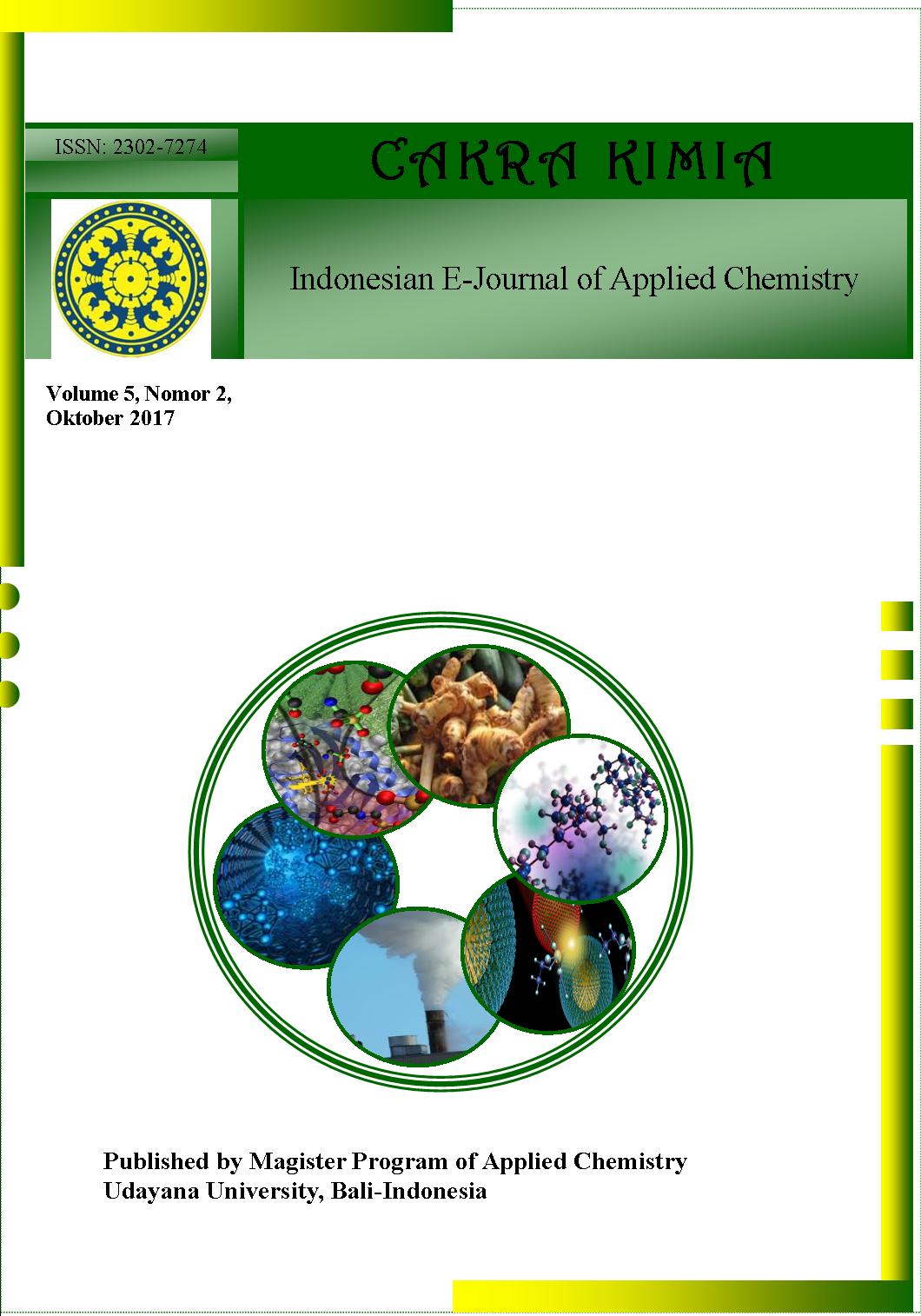POTENSI ANTIIMPLAMASI SECARA IN VIVO EKSTRAK ETANOL BATANG ANTAWALI (Tinospora sinensis) PADA TIKUS WISTAR YANG DIINDUKSI KARAGENAN
Abstract
ABSTRAK: Penelitian ini bertujuan untuk menguji aktivitas antiinfamasi dari ekstrak etanol batang antawali (Tinospora sinensis) dan mengidentifikasi kandungan kimianya. Uji aktivitas antiinflamasi dilakukan secara in vivo dengan metode induksi karagenan, sedangkan identifikasi kandungan kimia secara kualiatif dengan uji fitokimia. Penelitian ini menggunakan 25 ekor tikus putih jantan galur Wistar yang dibagi menjadi 5 kelompok yaitu kontrol negatif (P0), kontrol positif (P1), dan kelompok ekstrak uji (P2, P3, dan P4) dengan dosis 125 mg/kg BB, 250 mg/kg BB, dan 500 mg/kg BB. Hasil uji aktivitas antiinflamasi menunjukkan bahwa semakin rendah dosis yang diberikan, maka akan menghasilkan persentase hambatan inflamasi yang semakin besar. Pemberian dosis 125 mg/kg BB mampu menghasilkan persentase hambatan tertinggi, diikuti dengan dosis 250 mg/kg BB, serta 500 mg/kg BB yaitu masing-masing sebesar 64,71%; 52,94%; dan 29,41% pada menit ke-360. Ekstrak etanol batang antawali memiliki nilai ED50 sebesar 51,521 mg/kg BB. Secara statistik dengan uji One Way ANOVA menunjukkan nilai p<0,05. Hasil uji fitokimia menunjukan bahwa ekstrak etanol batang Tinospora sinensis mengandung senyawa alkaloid, fenolik, dan steroid.
ABSTRACT: This study aimed to evaluate the antiinflammatory activity of ethanolic extract of antawali stem (Tinospora sinensis) and to identify its phytochemical constituents. In vivo antiinflammatory activity test was performed on Wistar rat oedem induced by carrageenan, while identification of chemical constituents was done with phytochemical screening. In this study, 25 male Wistar strains were divided into 5 groups : negative control (P0), positive control (P1), test extract group (P2, P3, and P4) with doses of 125 mg/kg BW, 250 mg/kg BW, and 500 mg/kg BW. Antiinflammatory activity test results showed that the lower the dose given, it will show a greater percentage of inflammatory inhibition. The dose of 125 mg/kg BW was able to produce the highest percentage of inhibition, followed by doses of 250 mg/kg BW, and 500 mg/kg BW at 64.71%; 52.94%; and 29.41% in the 360th minute. The extract of ethanol stem antawali active as antiinflamasi with ED50 that was equal to 51,521 mg/kg BB. Statistic One Way ANOVA test showed p value < 0,05. The result of phytochemical screening showed that stem ethanolic extract of Tinospora sinensis contains alkaloids, phenolic, and steroids.
Downloads
References
[2] Denko, C.W., 1992, A Role of Neuropeptide in Inflammation. Dalam: Whicher, J. T. and Evan S. W, Biochemistry of Inflammation, PP. 177-181, Kluwer Pub, 1992.
[3] Mayer R.A., Ringkamp M., Campbell J.N., Peripheral Neural Mechanism of Nociception. Dalam Pain, 5th (McMahon SB, Koltzenburg M., Ed.), Churchill Livingstone, 2006.
[4] Dalimartha, S., Atlas Tumbuhan Obat Indonesia Jilid V, Trubus Agriwidya, 2008.
[5] Heyne, K., Tumbuhan Berguna Indonesia, Jil. 3, a.b. Badan Litbang Kehutanan Jakarta, Yayasan Sarana Warna Jaya, 1502, 1950.
[6] Sudarsono, A. Pudjoarinto, D. Gunawan, S. Wahyono, I.A. Donatus, M. Dradjad, S. Wibowo & Ngatidjan, Tumbuhan Obat 1, Pusat Penelitian Obat Tradisional Universitas Gadjah Mada, 2006.
[7] Harwoko, Nur A. C., Quality Standardization of Brotowali (Tinospora crispa) Stem Extract. Traditional Medical Research. 2016, 21(1) : 6-11.
[8] Rakesh Maurya, Prasoon Gupta, Kailash Chand, Manmeet Kumar, Preety Dixit, Nasib Singh & Anuradha Dube, Constituents of Tinospora sinensis and Their Antileishmanial Activity Against Leishmania donovani, J. Natural Product Research, 2008, 23 (12) : 1134-1143.
[9] Manjrekar, P. N., Jolly, C., Narayanan, S., Comparative Studies of the Immunomodulatory Activity of Tinospora cordifolia and Tinospora sinensis, J. Fitoterapia, 2000, 71(3) : 254-7.
[10] Ravi, V., T. S. M. Saleem, S. S. Patel, Raamamurthy., K. Gauthaman, Anti-inflammatory effect of methanolic extract of Solanum nigrum Linn. Berries, International Journal of Applied Research in Natural Products, 2009, 2(2) : 33-36.
[11] Linnet, A., P. G. Latha, M. M. Gincy, G. I. Anuja, S. R. Suja, S. Shymal, Anti-inflammatory, Analgesic and Anti-lipid Peroxidative Effects of Rhaphidophora pertusa (Roxb.) and Epipremnum pinnatum (Linn.) Engl. Aerial Parts. Indian Journal of Natural Products and Resources, 2010, 1(1) : 5-10.
[12] Morris, Christoper J., Carrageenan-Induced Paw Edema in the Rat and Mouse. Dalam : P. G. Winyard and D. A. Willoughby (Ed.), Methods in Molecular Biology, Vol. 225, Inflammation Protocols, Humana Press Inc, 2003, 115-121.
[13] Fitriyani, Atik., Lina Winarti, Siti Muslichah, Nuri, Uji Antiinflamasi Ekstrak Metanol Daun Sirih Merah (Piper crocatum Ruiz & Pav) pada Tikus Putih, Majalah Obat Tradisional, 2011, 16 (1) : 34-42.



 Petunjuk Penulisan
Petunjuk Penulisan
